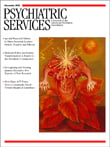Letter
In Reply: We appreciate Ms. Boyd's thoughtful comments about our work on the crisis intervention team (CIT) program. We agree with Ms. Boyd that mental disorders are health conditions requiring a health care response. We also agree that a 40-hour course for police officers is not "a solution to the emergency needs of mental health clients." The police-based CIT program is complementary to a mental health system's emergency mental health services, creating an effective partnership.
We agree with Ms. Boyd that training of dispatchers to better recognize mental illness and to facilitate appropriate triage is critical. In fact, dispatch training has been offered in the Akron CIT program and is considered one of the core elements of CIT in Ohio's Expert Consensus Document ( 1 ). Regarding the use of limited law enforcement training dollars, the beauty of CIT is that the training is provided free of charge by volunteers in the mental health and advocacy communities.
We agree with Ms. Boyd's suggestion that emergency medical service personnel are integral players in dealing with people in crisis resulting from mental illness. Emergency service personnel were included in Akron's first CIT class. However, although training these personnel is necessary, it is clearly not sufficient. In Akron's relatively resource-rich community, both emergency service personnel and police are dispatched on calls that are identified as involving mental illness. About half require the police to take control, most often when challenging behavior is present. In these difficult situations the police are the professionals best trained to preserve the safety and well-being of all people involved in the crisis. Also, in our state, law enforcement officers, not emergency service personnel, are empowered to initiate involuntary psychiatric evaluation. Furthermore, we found that approximately 25 percent of CIT calls in Akron are not identified initially as involving mental illness. CIT officers are trained to recognize illness on the scene and intervene appropriately.
Like Ms. Boyd, we have had concerns about the possibility of unintended consequences from the CIT program. Could CIT unintentionally further criminalize mental illness or increase stigma? Because CIT is not simply a police training program but a partnership between law enforcement, the mental health system, and consumers of mental health services and their families, we do not believe this has been the case in our community or in other areas of the country where CIT has been implemented. Patients and family members in our community have come to recognize and trust officers wearing the CIT pin. CIT officers appear proud of the contributions they make with their expanding skill set. We are struck by our finding reported in the February issue that CIT officers were more likely to transport individuals to treatment rather than leave them on the scene. Further studies are needed to ensure that CIT officers do not suffer excessive burnout and that individuals with mental illness are not inadvertently criminalized or stigmatized. Our ongoing studies hope to address some of these important issues. Although more data are needed, everyone involved with CIT experiences it as a community-transforming program.
1. Expert Consensus Document: Core Elements for Effective Crisis Intervention Team (CIT) Programs. Rootstown, Ohio CIT Coordinators Committee, Sept 2, 2004. Available at www.neoucom.edu/cjccoe/support/citcoreelements9204.pdfGoogle Scholar



